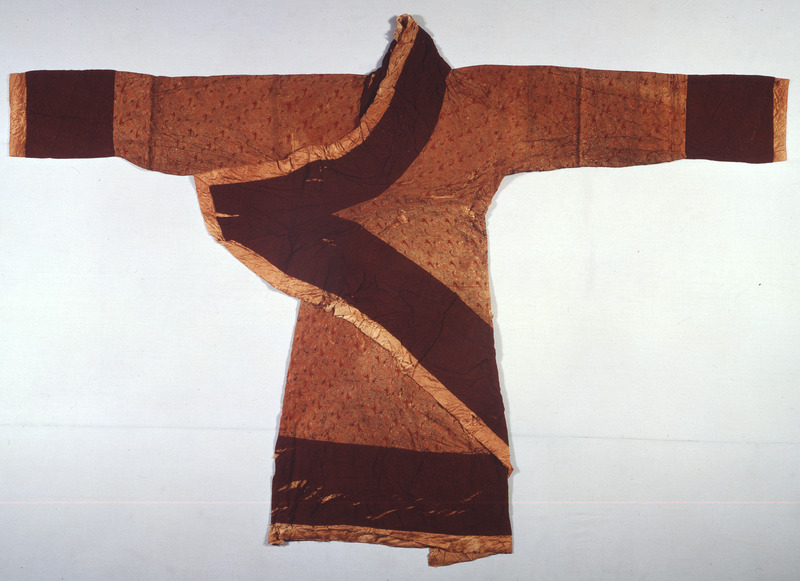Damask Gown with “Xin Qi” Embroidery

Western Han Dynasty (206 BC—25 AD)
Length of the Gown: 155cm; Overall Length of Sleeves: 243cm
Excavated from Han Tomb 1 at Mawangdui
The name of “Xin Qi” may be traced back to the related connotative meaning embodied in the design of the embroidery. The long-tailed little bird in “Xin Qi” Embroidery design appears to be a swallow. As swallow is a migrant bird with fixed timing, it is thus related to the Chinese words “Xin Qi”.
Damask Gown with “Xin Qi” Embroidery is the winter fashion dress for the Noble ladies of the Han Dynastsy. This gown, padded with silk wadding and hemmed with thin silk, has a crossed collar, a front extending diagonally from left to right, and a rectangular skirt. As it has silk padding, it should be a casual long dress worn by Xin Zhui in cold days.
Altogether 19 pieces of “Xin Qi Embroidery” on Damask were buried in Tomb 1, 3 independent lengths, 10 intact dresses and 6 fragmented gowns found inside the coffin.
深入探索
About Embroidery in China
Embroidery is the art or handicraft of decorating fabric or other materials with needle and thread or yarn. Chinese embroidery is some of the oldest extant needlework. The four major regional styles of Chinese embroidery are Suzhou embroidery (Su Xiu), Hunan embroidery (Xiang Xiu), Guangdong embroidery (Yue Xiu) and Sichuan embroidery (Shu Xiu). All of them are nominated as Chinese Intangible Cultural Heritage.
Chinese embroidery has a long history since Neolithic age. Because of the quality of silk fiber, most Chinese fine embroideries are made in silk. Some ancient vestiges of silk production have been found in various Neolithic sites dating back 5,000-6,000 years in China. Currently the earliest real sample of silk embroidery discovered in China is from a tomb in Mashan in Hubei province identified with the Zhanguo period (5th-3rd centuries BC). After the opening of Silk Route in Han Dynasty, the silk production and trade became flourishing.
Today most handwork had been replaced by machinery, but some very sophisticated production are still hand-made. The modern Chinese silk embroidery still prevails in southern China. (Wiki)



